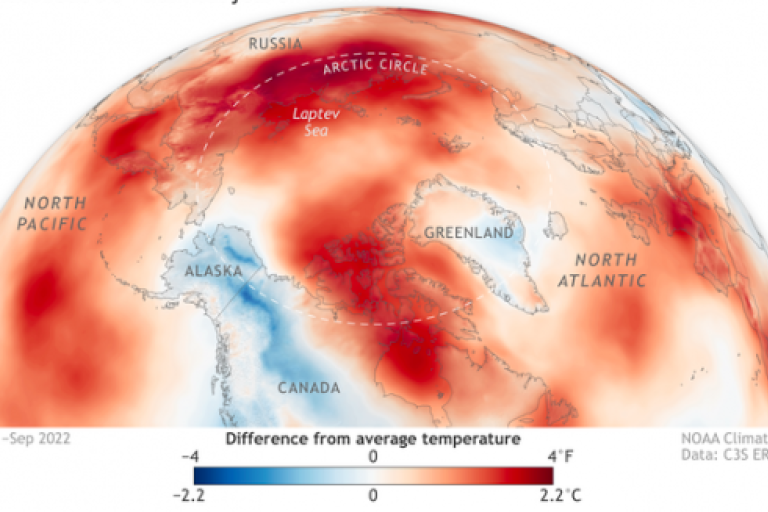Climate change is transforming the Arctic
A typhoon, smoke from wildfires and increasing rain are not what most imagine when thinking of the Arctic. Yet these are some of the climate-driven events included in a detailed annual update on the transformation of the once reliably frozen, snow-covered region which is heating up faster than any other part of the world.

The 2022 Arctic Report Card from the US National Oceanic and Atmospheric Administration (NOAA) is compiled by 147 experts from 11 nations and provides an important insight into the rapid change in the Arctic and its impact on the environment, ecosystems, economies and local communities.
It is yet another piece of evidence of the many changes in the Earth system being monitored by the WMO community.
“The 2022 Arctic Report Card underscores the urgency to confront the climate crisis by reducing greenhouse gases and taking steps to be more resilient,” said NOAA Administrator Rick Spinrad, Ph.D.

Major findings in this year’s report include:
Arctic annual air temperatures from October 2021 to September 2022 were the sixth warmest dating back to 1900, continuing a decades-long trend in which Arctic air temperatures have warmed faster than the global average. The Arctic's seven warmest years since 1900 have been the last seven years.
Arctic sea ice extent (coverage) was higher than many recent years, but much lower than the long-term average. Multiyear ice extent, sea-ice thickness and volume rebounded after a near-record low in 2021, but was below conditions in the 1980s and 1990s, with older ice extremely rare. Open water developed near the North Pole for much of the summer, allowing polar-class tourist and research vessels easy access. The Northern Sea Route and Northwest Passage were also largely open.
Satellite records from 2009 to 2018 show increasing maritime ship traffic in the Arctic as sea ice declines. The most significant increases in traffic are occurring among ships traveling from the Pacific Ocean through the Bering Strait and Beaufort Sea. This opens economic opportunities for new trade routes and also poses potential human-caused stresses on Arctic people and ecosystems.
The 2021-2022 Arctic snow season saw a combination of above-average snow accumulation but early snowmelt, consistent with long-term trends of shortening snow seasons in several areas.
Wetter-than-normal conditions predominated over much of the Arctic from October 2021 to September 2022. Precipitation has increased significantly since the 1950s across all seasons and datasets. Heavy precipitation events are more common in the North Atlantic subarctic, while much of the central Arctic shows increases in consecutive wet days and decreases in consecutive dry days. October 2021 through September 2022 was the 3rd wettest year of the past 72 years.
Typhoon Merbok, which was fueled by unusually warm water in the north Pacific, dramatically shaped 2022 in the Bering Sea region. Merbok struck the west coast of Alaska in mid-September, bringing a destructive storm surge that caused homes to break loose from foundations and damaged infrastructure in several coastal and river communities.
The Greenland ice sheet lost ice in 2022, the 25th consecutive year of ice loss. In September 2022, the Greenland ice sheet had unprecedented late-season warming, creating surface melt conditions over 36% of the ice sheet on September 3, including the Greenland ice sheet’s summit at 10,500 feet. This followed a July 18 large surface melt event observed across 42% of the Greenland ice sheet surface.

The August 2022 sea surface temperatures continued to show a warming trend that has been observed since 1982 for much of the ice-free Arctic Ocean. In the Barents and Laptev seas, August 2022 mean sea surface temperatures were 3.5 to 5.5 degrees Fahrenheit (2 to 3°C) warmer than 1991–2020 August mean values while unusually cool August sea surface temperatures of 5.4 degrees Fahrenheit (3 degrees Celsius) below the trend occurred in the Chukchi Sea, likely driven by late-summer sea ice in the region that was kept in place by the winds.
This year’s Arctic Report Card also features the most comprehensive chapter in the annual report’s 17-year history about how these dramatic environmental changes are felt by Arctic Indigenous people, and how their communities are addressing the changes.
- WMO Member:
- United States of America










